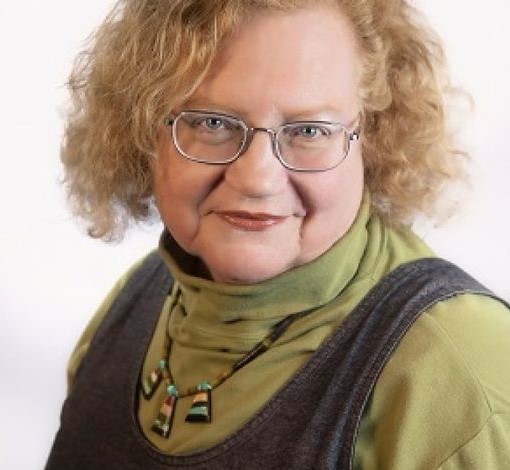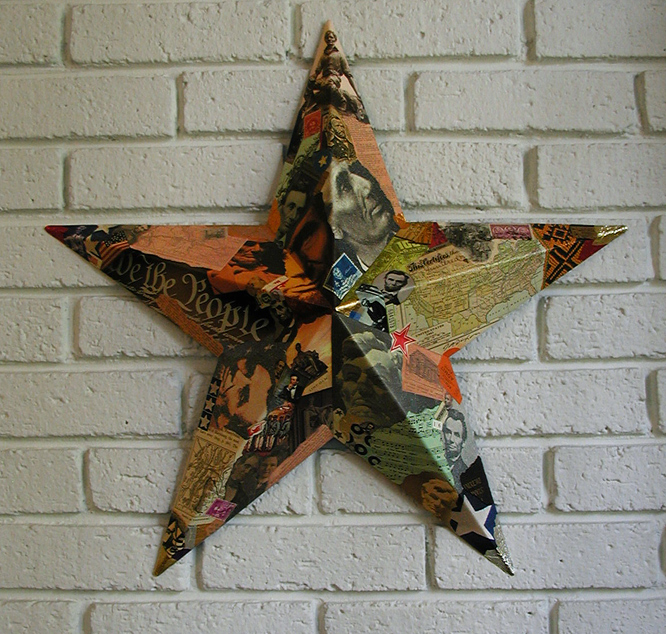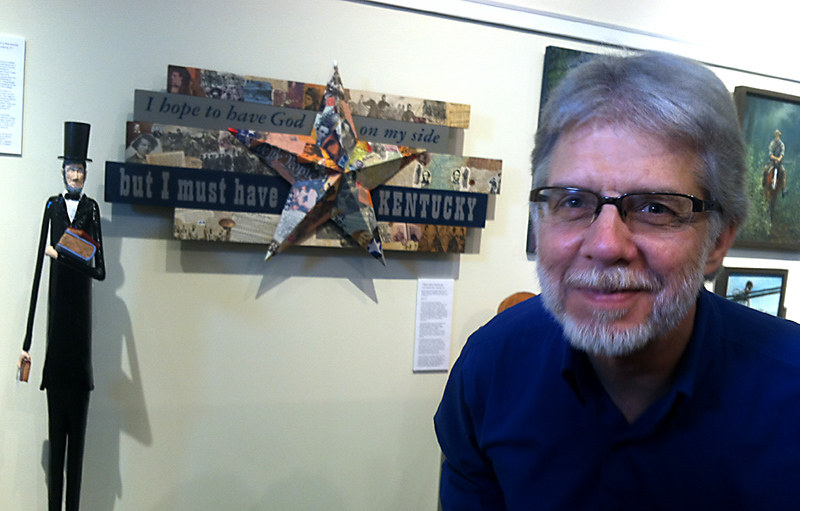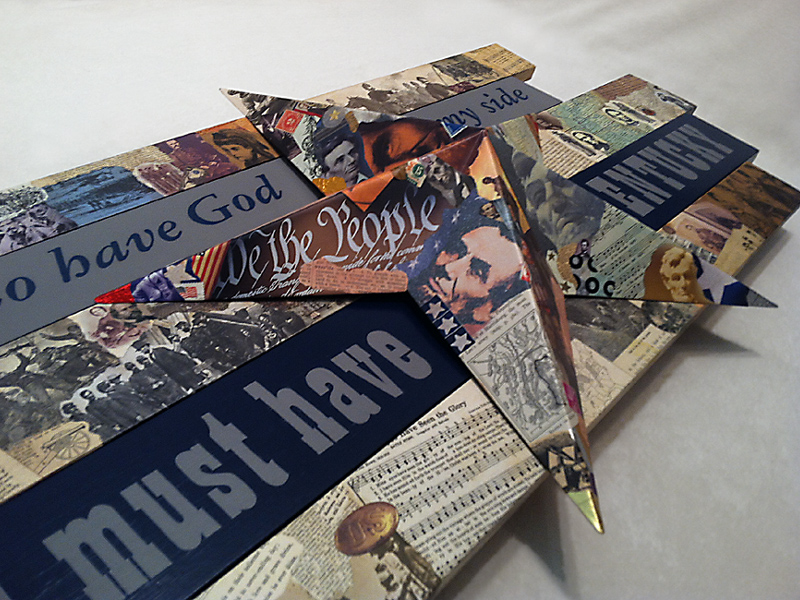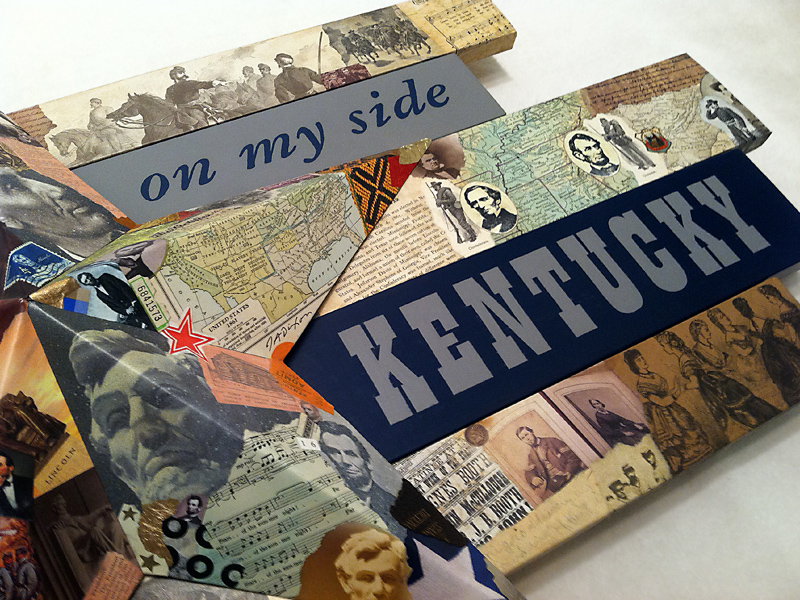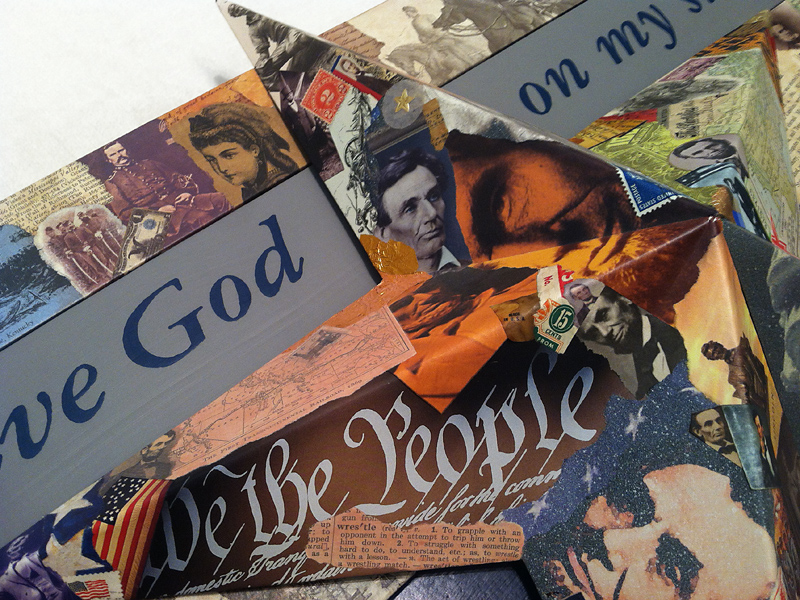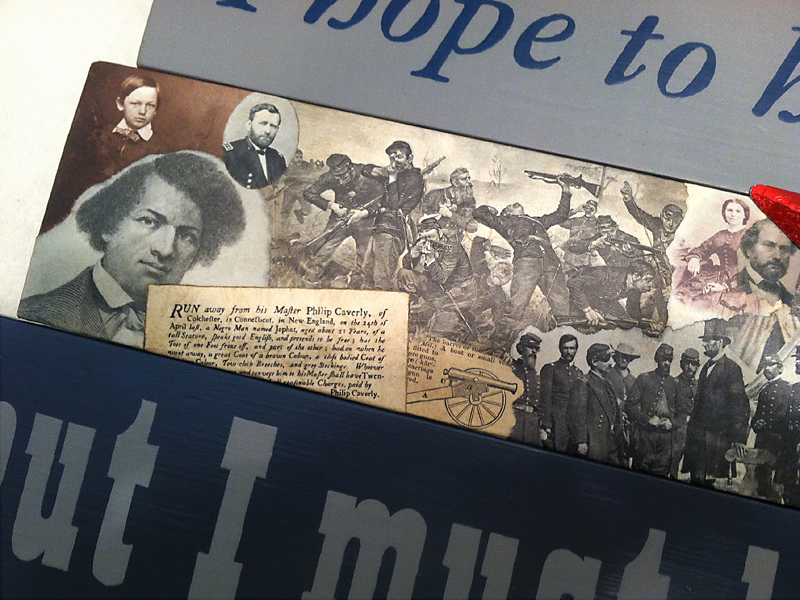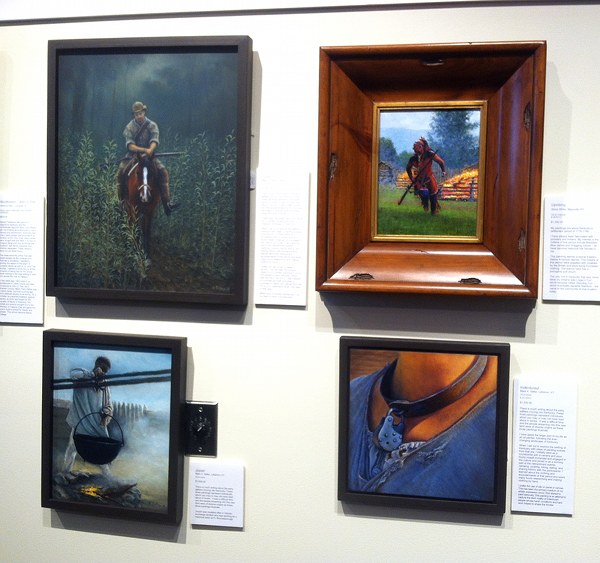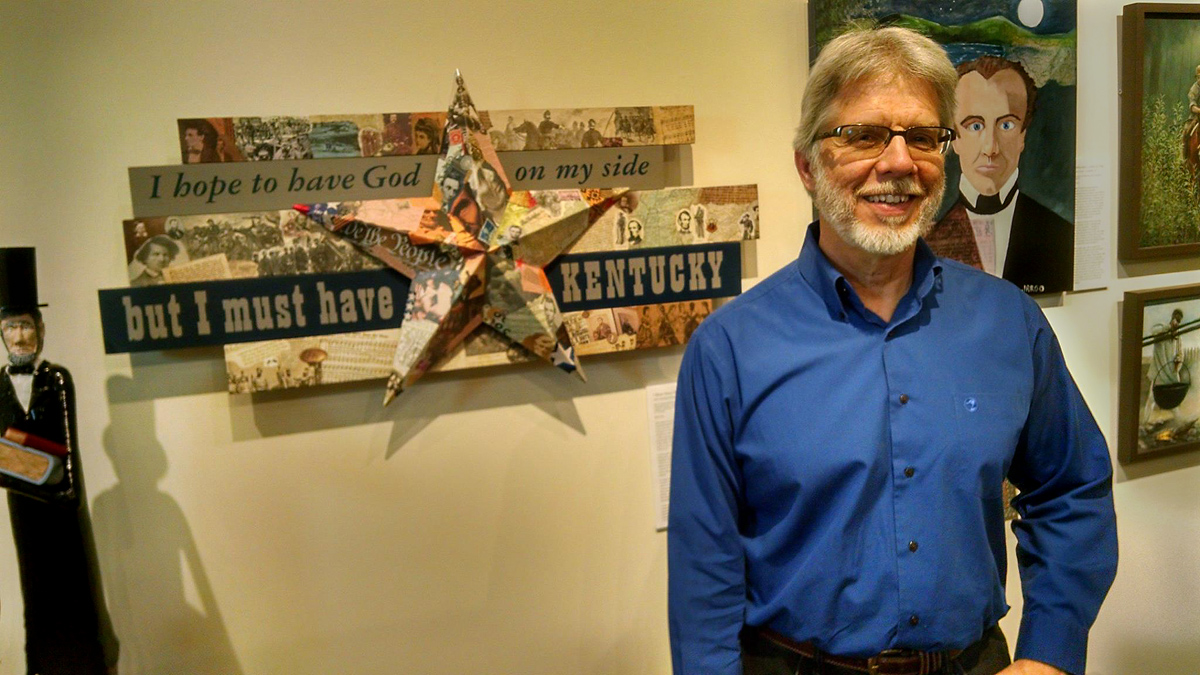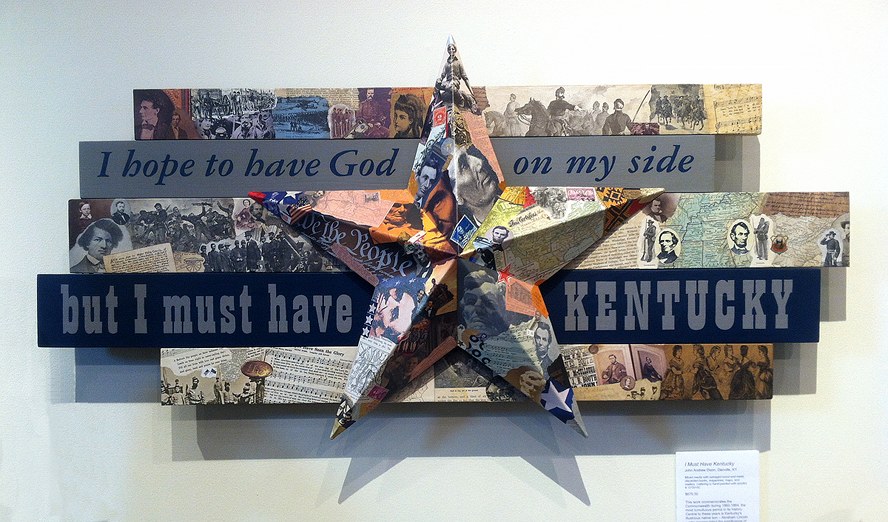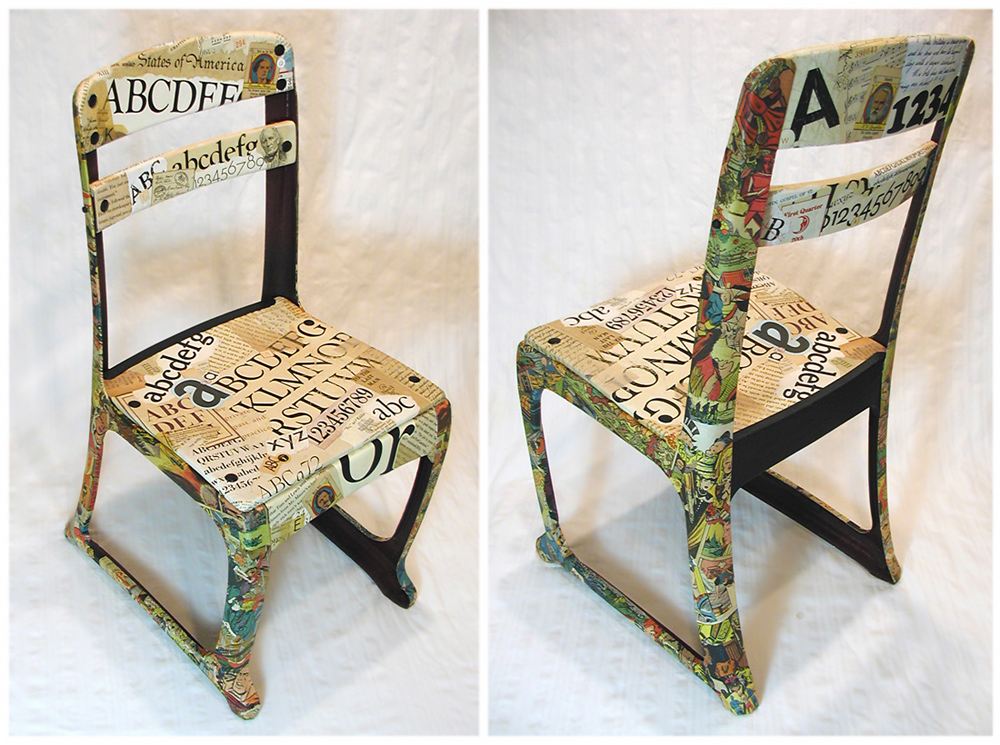Unless you favor retrospective musings, I totally understand your wanting to skip this post. Reviewing the second half of what has become a ten-year blogsite is almost too intimidating in scope for me to synthesize with any coherence, so I’ll break the previous five years into a few sections. My early annual recaps offered evidence that I was entertaining some ambitious goals, although I should have discerned at the time that the “blogosphere’ was winding down as a popular online phenomenon. Given the recent head-spinning rate of networking change, it’s a period that seems nearly unrecognizable today. Even my mother had a blog for a spell. And so I shall begin with a salute to her profound influence.
The world without her is still a world full of Mombo.
This past month was dominated by the earthly departure of V E Dixon, my mother. The role she played in my becoming an artist and the approach I bring to my practice cannot, and should not, 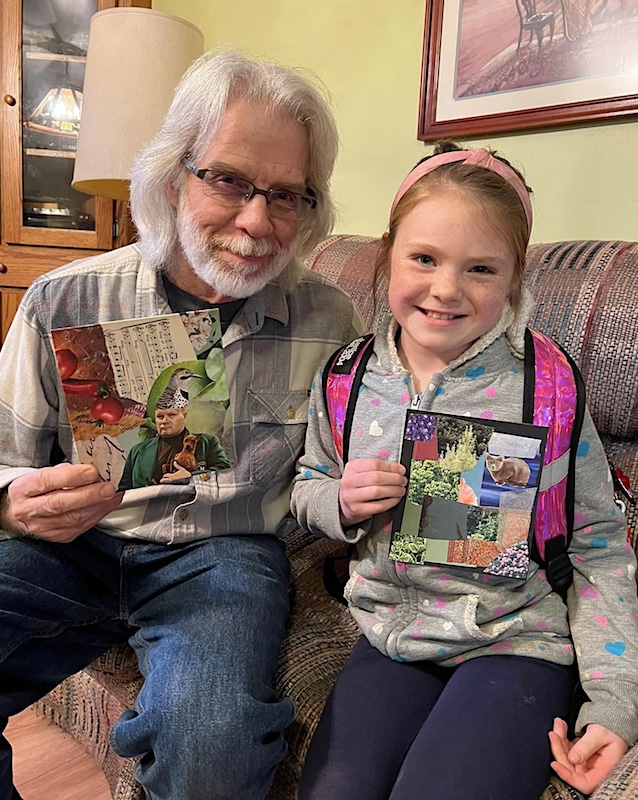 be understated in this format nor any other. What a debt I owe to her, and to pay it forward will require that I live as long as she! I might’ve started “giving back” much earlier, if it had been my basic nature. I can be a quick study for most things, but it often takes me far too long to learn the rest, especially when it involves stepping beyond my own creative urge. Her life was a lesson in putting others before self. In order to support her parents’ household in a world at war, she turned down a full scholarship to the same University of Cincinnati that I would eventually attend. Decades later, in a nest recently emptied of seven children, and just as she was about to explore her own personal interests, she followed her family to a remote part of a rural Kentucky county. As a widow, she built an ethical foundation for a land-based legacy that is now set to endure for generations. When she faced a grim medical prognosis that would break the spirit of others, she maintained a zest for life, an obvious concern for how it might affect others, and an astonishing diligence to push back against it. The world of my youth had shouted, “Be cynical, or pessimistic, or both,” but she would always be my reliable source of optimism, like a spring which never dries up.
be understated in this format nor any other. What a debt I owe to her, and to pay it forward will require that I live as long as she! I might’ve started “giving back” much earlier, if it had been my basic nature. I can be a quick study for most things, but it often takes me far too long to learn the rest, especially when it involves stepping beyond my own creative urge. Her life was a lesson in putting others before self. In order to support her parents’ household in a world at war, she turned down a full scholarship to the same University of Cincinnati that I would eventually attend. Decades later, in a nest recently emptied of seven children, and just as she was about to explore her own personal interests, she followed her family to a remote part of a rural Kentucky county. As a widow, she built an ethical foundation for a land-based legacy that is now set to endure for generations. When she faced a grim medical prognosis that would break the spirit of others, she maintained a zest for life, an obvious concern for how it might affect others, and an astonishing diligence to push back against it. The world of my youth had shouted, “Be cynical, or pessimistic, or both,” but she would always be my reliable source of optimism, like a spring which never dries up. 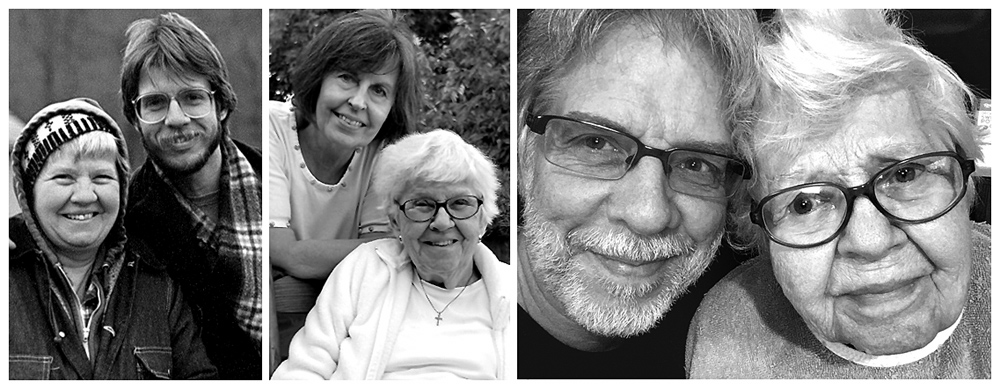 I could’ve become a quitter early on, but she helped me to overcome discouragement born of self-doubt and to fulfill commitments. If something is worth doing, it’s worth doing well. Why not always do your very best? And then you will automatically get better. Along with my siblings, everything was done to provide the care she needed to continue living at home, until it became no longer possible. Those years — what could be mistakenly judged as sacrificial — strengthened our family bond in a way that will last us for the duration. To separate that from my activity as an artist was unnecessary at the time and foolhardy in hindsight. Above and beyond the value of artisanship, she taught me that a creative life without love for others is devoid of meaning. Of all the souls I have intimately known, hers is the most worthy of imitation.
I could’ve become a quitter early on, but she helped me to overcome discouragement born of self-doubt and to fulfill commitments. If something is worth doing, it’s worth doing well. Why not always do your very best? And then you will automatically get better. Along with my siblings, everything was done to provide the care she needed to continue living at home, until it became no longer possible. Those years — what could be mistakenly judged as sacrificial — strengthened our family bond in a way that will last us for the duration. To separate that from my activity as an artist was unnecessary at the time and foolhardy in hindsight. Above and beyond the value of artisanship, she taught me that a creative life without love for others is devoid of meaning. Of all the souls I have intimately known, hers is the most worthy of imitation.
Landscape art tries to elbow aside my other styles of collage.
I’m thinking about a hot day in August and how I found in the distant, knobby horizon a stimulating prompt to create a collage outside. Staying in the sun to dry my glue offered no mercy, so I eventually moved to the shade. I came away with an impression to finish in the studio as part of my evolving landscape series called Litter-ally Kentucky. 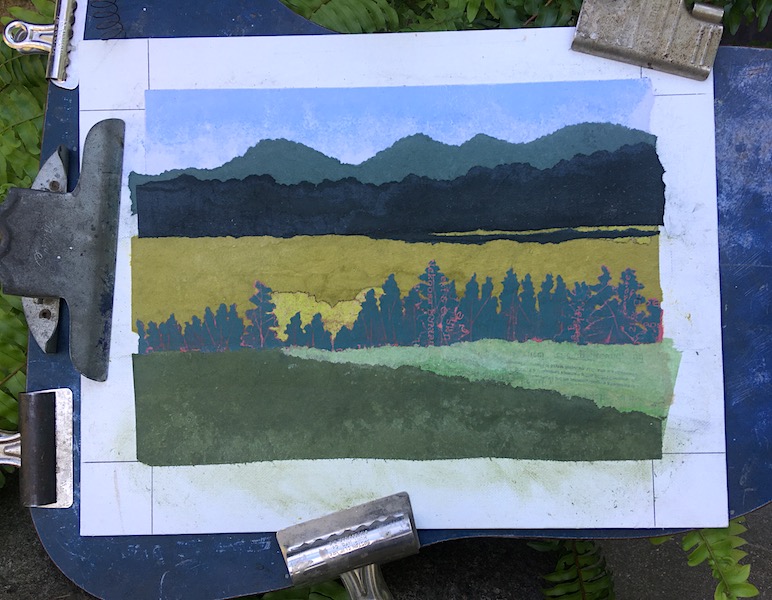 As I reflect on a now-familiar process, it would be difficult to remember all the unknowns I faced when I first took paper and paste on location, had I not recorded my experiences here in this format over the past five years. As a fine-art painter, I possessed a meager background at best and no knowledge of how to function in the open air.
As I reflect on a now-familiar process, it would be difficult to remember all the unknowns I faced when I first took paper and paste on location, had I not recorded my experiences here in this format over the past five years. As a fine-art painter, I possessed a meager background at best and no knowledge of how to function in the open air. 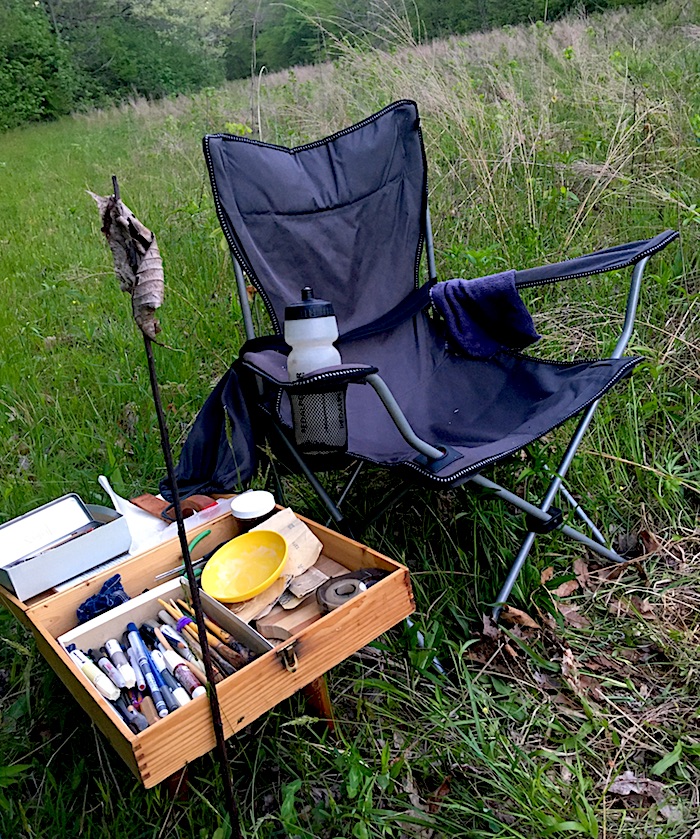 I knew a lot about manipulating paper, however, and was fortunate to have many friends who encouraged me to join group outings and to use a medium that has never been associated with creating representational art out of doors. As I’ve noted before, people often think my collage landscapes are traditional paintings, until they view them up close. I share their sense of wonder myself, and I eventually discovered other artists who were solving the same challenges. We happen to be few and far between. My collage landscapes began to attract some attention. I competed in timed plein-air events, had my first solo landscape exhibition, and received a feature in the UK-based Contemporary Collage Magazine. I was so comfortable with concentrating in this area of collage that I applied for and was awarded funding support from the National Endowment for the Arts through the Kentucky Arts Council. In case you want to follow my journey here, I’ve done my best to tell the story at The Collage Miniaturist. I still have no idea where this adventure will take me, but I invite you to stop back and find out!
I knew a lot about manipulating paper, however, and was fortunate to have many friends who encouraged me to join group outings and to use a medium that has never been associated with creating representational art out of doors. As I’ve noted before, people often think my collage landscapes are traditional paintings, until they view them up close. I share their sense of wonder myself, and I eventually discovered other artists who were solving the same challenges. We happen to be few and far between. My collage landscapes began to attract some attention. I competed in timed plein-air events, had my first solo landscape exhibition, and received a feature in the UK-based Contemporary Collage Magazine. I was so comfortable with concentrating in this area of collage that I applied for and was awarded funding support from the National Endowment for the Arts through the Kentucky Arts Council. In case you want to follow my journey here, I’ve done my best to tell the story at The Collage Miniaturist. I still have no idea where this adventure will take me, but I invite you to stop back and find out!
Check out my top ten highlights . . .
Are you still with me, reader? If I continue to give my verbosity free reign, this overview will get out of hand. Instead, I’ll offer links to posts that cover some milestone artistic developments since the end of 2017. I could feature my handmade greeting cards, best-in-show award, gift art, or collage purgations, but I can see that much of that is significant only to me. I want to highlight things that might be worth your time, too. (The following sequence is not relevant for chronology or significance.)
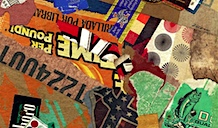 • Adjudication by the Arts Council as an Kentucky Crafted artist sealed my inertia as a unabashed Merzologist, while I ventured deeper into an investigation of representational collage.
• Adjudication by the Arts Council as an Kentucky Crafted artist sealed my inertia as a unabashed Merzologist, while I ventured deeper into an investigation of representational collage.
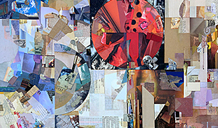 • A relationship with the Kentucky Artisan Center culminated in Synthesis, my most ambitious collage to date. I owe that and more to my friend Gwen, who was gone far too soon.
• A relationship with the Kentucky Artisan Center culminated in Synthesis, my most ambitious collage to date. I owe that and more to my friend Gwen, who was gone far too soon.
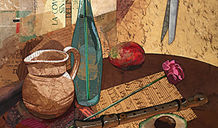 • My expanded foray into the genre of figurative collage resulted in a successful still life, praise from Professor Sheldon Tapley, and acceptance to ArtFields in Lake City, South Carolina.
• My expanded foray into the genre of figurative collage resulted in a successful still life, praise from Professor Sheldon Tapley, and acceptance to ArtFields in Lake City, South Carolina.
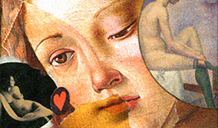 • The Kanyer Art Collection provided opportunities for me and a growing worldwide community of collage artists, including a purchase award for one piece in my series of tiny diptychs.
• The Kanyer Art Collection provided opportunities for me and a growing worldwide community of collage artists, including a purchase award for one piece in my series of tiny diptychs.
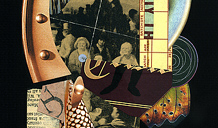 • My participation in the Baker’s 1/2-Dozen Collage Exchange of Cecil Touchon’s IMCAC and the Februllage collage-a-day initiative sparked two new series of collage rituals.
• My participation in the Baker’s 1/2-Dozen Collage Exchange of Cecil Touchon’s IMCAC and the Februllage collage-a-day initiative sparked two new series of collage rituals.
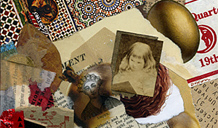 • I gained greater world exposure when scholar Anna Kłos selected my miniatures for back-to-back international collage exhibitions at Retroavangarda Gallery in Warsaw, Poland.
• I gained greater world exposure when scholar Anna Kłos selected my miniatures for back-to-back international collage exhibitions at Retroavangarda Gallery in Warsaw, Poland.
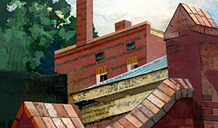 • My footing as a Kentucky artist stabilized with the aid of Kate Savage and Arts Connect, including a solo show, video, podcast, and “Paint the Town” events in 2020, 2021, and 2022.
• My footing as a Kentucky artist stabilized with the aid of Kate Savage and Arts Connect, including a solo show, video, podcast, and “Paint the Town” events in 2020, 2021, and 2022.
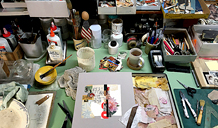 • An imagination as peculiar as mine could not have foreseen that my basement studio would be showcased in THE CUTTING CHAOS from Finland’s Niko Vartiainen. It’s all about the stash!
• An imagination as peculiar as mine could not have foreseen that my basement studio would be showcased in THE CUTTING CHAOS from Finland’s Niko Vartiainen. It’s all about the stash!
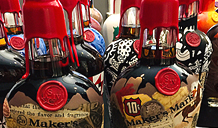 • I’ll never take for granted my valued regional connections with Maker’s Mark Distillery, LexArts, Art Center of the Bluegrass, Connie Beale’s CAMP, or Art Space Versailles.
• I’ll never take for granted my valued regional connections with Maker’s Mark Distillery, LexArts, Art Center of the Bluegrass, Connie Beale’s CAMP, or Art Space Versailles.
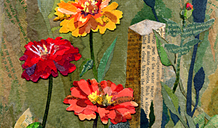 • And finally — important rituals at the heart of being an artist continue to surprise me, whether it’s a 30-day studio explosion or my vital practice of working from nature outside.
• And finally — important rituals at the heart of being an artist continue to surprise me, whether it’s a 30-day studio explosion or my vital practice of working from nature outside.
